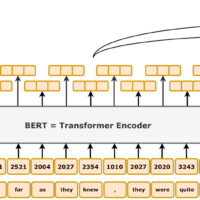Comparing Momentum and Normalization in Deep Learning: A Mathematical Perspective Momentum and normalization are two pivotal techniques in deep learning that enhance the efficiency and stability of training. This article explores the mathematics behind these methods, provides examples with and without these techniques, and demonstrates why they are beneficial for deep learning models. Comparing Momentum and Normalization Momentum: Smoothing and Accelerating Convergence Momentum is an optimization technique that modifies the standard gradient descent by adding a velocity term to the update rule. This velocity term is a running average of past gradients, which helps the optimizer to continue moving in directions where gradients are consistently pointing, thereby accelerating convergence and reducing oscillations. Mathematical Formulation: Without Momentum (Standard Gradient Descent): With Momentum: Here, is the momentum coefficient (typically around 0.9), and accumulates the gradients to provide smoother and more directed updates. Example with and Without Momentum: Consider a simple quadratic loss function , starting with , a learning rate , and for momentum. Without Momentum: Iteration 1: Gradient at : Update: Iteration 2: Gradient at : Update: With Momentum: Iteration 1: Gradient at : Velocity update: Update: Iteration 2: Gradient at : Velocity update: Update: Why Momentum is Better: Faster Convergence: With momentum, the updates are more directed, allowing the optimizer to move more quickly toward the minimum. Reduced Oscillations: The momentum term smooths the path to the minimum, preventing the oscillations that occur in standard gradient descent, especially in areas with steep gradients. Normalization: Stabilizing the Learning Process Normalization techniques, such as Batch Normalization, help to maintain consistent distributions of activations across layers during training, reducing issues like internal covariate shift and vanishing/exploding gradients. Mathematical Formulation: Batch Normalization: Here, and are the batch mean and standard deviation, and and are learnable parameters. Example with and Without Normalization: Consider a batch of inputs in a neural network. Without Normalization: The raw inputs are fed directly into the network, potentially leading to unstable activations in deeper layers, especially as earlier layers change during training. With Batch Normalization: Calculate batch mean and standard deviation . Normalize: Apply scaling (assume and ): Why Normalization is Better: Stable Activations: By normalizing inputs, the network receives inputs with consistent distributions, which leads to more stable training and often faster convergence. Improved Gradient Flow: Normalization reduces the likelihood of vanishing/exploding gradients, especially in deep networks. Why Going with Fast Step to the Minimum in Gradient Descent Can Be Problematic The Problem with Large Steps in Gradient Descent While it might seem advantageous to use large steps to quickly reach the minimum, this approach can lead to several issues: Overshooting the Minimum: Large steps can cause the optimizer to jump past the minimum, leading to oscillations or divergence. Getting Stuck in Local Minima: In complex loss landscapes, large steps might cause the optimizer to get stuck in suboptimal local minima or saddle points. Sensitivity to Noisy Gradients: Large steps can amplify the effect of noise in gradient estimates, causing erratic parameter updates. How Momentum Helps Momentum provides a solution to these problems by smoothing the gradient updates: Controlled Progress: Momentum accumulates gradients over time, allowing for smoother and more controlled progress toward the minimum. This prevents overshooting and helps the optimizer escape from local minima or saddle points. Efficiency: Even with smaller individual steps, momentum ensures steady and efficient progress toward the global minimum, combining the advantages of stability and speed. Why Smaller Steps Without Momentum Are Also Not Ideal: Slow Convergence: While smaller steps reduce the risk of overshooting, they can lead to very slow convergence, especially in flat regions of the loss surface. Inefficiency: The need for many iterations with small steps increases computational costs and delays the learning process. Momentum strikes a balance, providing a means to move steadily and efficiently toward the minimum without the pitfalls of large or small steps alone. Conclusion Momentum and normalization are both crucial in deep learning, but they address different challenges: Momentum: Smooths and accelerates the optimization process by using accumulated gradients, enabling efficient convergence even with smaller steps. Normalization: Stabilizes the learning process by maintaining consistent activations across layers, improving gradient flow and training stability. Together, these techniques enhance the robustness and efficiency of deep learning models, making them indispensable tools in modern neural network training. Applying Momentum and Normalization in Code Example: This section demonstrates how to apply momentum and normalization separately in a simple deep learning model using TensorFlow and Keras. We will train a Convolutional Neural Network (CNN) on the MNIST dataset, a popular dataset of handwritten digits, and compare the results with and without momentum and normalization. Code Implementation The following code snippet shows how to apply these techniques in a practical example: # Google Colab code for applying Momentum and Normalization in a simple CNN # Import necessary libraries import tensorflow as tf from tensorflow.keras import layers, models import matplotlib.pyplot as plt # Load and preprocess the MNIST dataset mnist = tf.keras.datasets.mnist (x_train, y_train), (x_test, y_test) = mnist.load_data() # Normalize the images to [0, 1] range x_train = x_train / 255.0 x_test = x_test / 255.0 # Reshape the data to add a channel dimension x_train = x_train.reshape(x_train.shape[0], 28, 28, 1) x_test = x_test.reshape(x_test.shape[0], 28, 28, 1) # Define a function to create a simple CNN model def create_model(use_batch_norm=False): model = models.Sequential() model.add(layers.Conv2D(32, (3, 3), activation=’relu’, input_shape=(28, 28, 1))) if use_batch_norm: model.add(layers.BatchNormalization()) model.add(layers.MaxPooling2D((2, 2))) model.add(layers.Conv2D(64, (3, 3), activation=’relu’)) if use_batch_norm: model.add(layers.BatchNormalization()) model.add(layers.MaxPooling2D((2, 2))) model.add(layers.Flatten()) model.add(layers.Dense(64, activation=’relu’)) if use_batch_norm: model.add(layers.BatchNormalization()) model.add(layers.Dense(10, activation=’softmax’)) return model # Train and evaluate a model with/without momentum and batch normalization def train_model(use_momentum=False, use_batch_norm=False): model = create_model(use_batch_norm) if use_momentum: optimizer = tf.keras.optimizers.SGD(learning_rate=0.01, momentum=0.9) else: optimizer = tf.keras.optimizers.SGD(learning_rate=0.01) model.compile(optimizer=optimizer, loss=’sparse_categorical_crossentropy’, metrics=[‘accuracy’]) history = model.fit(x_train, y_train, epochs=5, validation_data=(x_test, y_test)) # Plot training & validation accuracy values plt.plot(history.history[‘accuracy’], label=’Training Accuracy’) plt.plot(history.history[‘val_accuracy’], label=’Validation Accuracy’) plt.title(‘Model accuracy’) plt.xlabel(‘Epoch’) plt.ylabel(‘Accuracy’) plt.legend(loc=’lower right’) plt.show() return model # Train and compare models print(“Training without Momentum and without Batch Normalization:”) model_no_momentum_no_bn = train_model(use_momentum=False, use_batch_norm=False) print(“\nTraining with Momentum but without Batch Normalization:”) model_with_momentum_no_bn = train_model(use_momentum=True, use_batch_norm=False) print(“\nTraining with Batch Normalization but without Momentum:”) model_no_momentum_with_bn = train_model(use_momentum=False, use_batch_norm=True) print(“\nTraining with both Momentum and Batch Normalization:”) model_with_momentum_with_bn = train_model(use_momentum=True, use_batch_norm=True) Explanation Model Creation: The create_model function constructs a simple CNN. It has an option (use_batch_norm) to include Batch Normalization layers after each convolutional and dense layer. Training Function: The train_model function trains the model with or without momentum (by setting use_momentum) and with or without Batch Normalization (by setting use_batch_norm). Comparison: The code trains four different models: Without Momentum and without Batch Normalization: Baseline model with standard SGD optimization. With Momentum but without Batch Normalization: Model optimized using momentum to accelerate convergence. With Batch Normalization but without Momentum: Model stabilized using Batch Normalization for improved training. With both Momentum and Batch Normalization: Combining both techniques to enhance the training process. The training and validation accuracies are plotted for each configuration, allowing you to visually compare the impact of momentum and normalization on model performance. Instructions Copy and paste this code into a Google Colab notebook and run it to observe how momentum and normalization affect the training and validation accuracy of the CNN. This code will help you see the benefits of using momentum (faster and more stable convergence) and normalization (improved training stability and speed) in training a deep learning model. Lets Break Down to Understand the Code Lets section breaks down the code into key parts, explaining how momentum and normalization are implemented. 1. Creating the Model The first key part of the code is the create_model function, which builds a Convolutional Neural Network (CNN). This function allows the inclusion of Batch Normalization layers after each convolutional and dense layer by setting the use_batch_norm parameter to True. def create_model(use_batch_norm=False): model = models.Sequential() model.add(layers.Conv2D(32, (3, 3), activation='relu', input_shape=(28, 28, 1))) if use_batch_norm: model.add(layers.BatchNormalization()) model.add(layers.MaxPooling2D((2, 2))) model.add(layers.Conv2D(64, (3, 3), activation='relu')) if use_batch_norm: model.add(layers.BatchNormalization()) model.add(layers.MaxPooling2D((2, 2))) model.add(layers.Flatten()) model.add(layers.Dense(64, activation='relu')) if use_batch_norm: model.add(layers.BatchNormalization()) model.add(layers.Dense(10, activation='softmax')) return model Explanation: Conditional Batch Normalization: The use_batch_norm parameter determines whether Batch Normalization is added to the model. If True, a BatchNormalization layer is added after each convolutional and dense layer. Customization: This design allows you to easily toggle normalization on or off when creating the model, enabling a straightforward comparison between models with and without normalization. 2. Training the Model The next important part of the code is the train_model function, which handles the training of the CNN. This function takes two parameters: use_momentum and use_batch_norm, allowing you to control whether momentum or Batch Normalization is used during training. def train_model(use_momentum=False, use_batch_norm=False): model = create_model(use_batch_norm) if use_momentum: optimizer = tf.keras.optimizers.SGD(learning_rate=0.01, momentum=0.9) else: optimizer = tf.keras.optimizers.SGD(learning_rate=0.01) model.compile(optimizer=optimizer, loss='sparse_categorical_crossentropy', metrics=['accuracy']) history…


